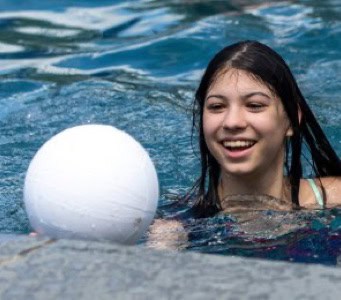At Turnbridge, physical and emotional safety is instilled into every aspect of our adolescent programming, facilities, and practices.
Turnbridge is designed to ensure physical and emotional safety for its clients. Families and young clients need to feel fully safe and well cared for in order to feel comfortable engaging in any aspect of our programming. Turnbridge facilities adhere to all safety regulation standards for the residential treatment of adolescents.
Facilities and grounds are perpetually staffed by specially trained team members who act as resources to clients at any time. Monitored camera systems throughout the adolescent programs ensure that the physical location of all clients is readily available. All family and authorized consulting healthcare professional visits are recorded and visitors are accompanied by Turnbridge staff. The secluded and gated acreage of our Adolescent Girl’s and Adolescent Boy’s Residential Programs reduces contact with nearby residences or businesses.



The small size of our adolescent programs — just eighteen clients in the boy’s program and twenty-three clients in the girl’s program — also plays an important role in helping young people and family members feel safe. While clients are independent throughout their treatment stay, they are very regularly engaged with staff members and peers. Turnbridge Adolescent Team Members strive to develop a positive therapeutic rapport with clients.
Adolescents at our programs maintain a full and diverse schedule of activities, including individual and group therapy, group meals, on-campus adventure programming, recreation, and family programming. All recreational activities are closely supervised by trained Turnbridge staff to ensure that activities are safe as well as enjoyable.
Emotional safety is as important as physical safety when it comes to meeting the needs of adolescents with mental health and substance use disorders. The Turnbridge curriculum is designed to expose young people to a wide range of therapies, activities, and challenges. Observing the ways in which adolescents respond to various stimuli is one way to identify issues that treatment can address. It is also crucial, however, that clients are not compelled to engage in activities that exacerbate their conditions. Team members are highly sensitive to the attitudes of each client and can tailor treatments and activities that make them the most comfortable.
Not all young people enjoy team sports or heavy physical exertion. Others may experience anxiety related to academic work. Some find it difficult to develop friendships easily. Our goal is to find the right combination of activities, therapies, and stimuli that allow us to make therapeutic progress while reducing perceived stress. While we may ask young people to try new things that are outside of their traditional comfort zones, this does not mean that they will be compelled to engage in activities that they do not enjoy or that induce worry. We support individual emotional health while using observations about client interactions to identify underlying concerns that can be addressed in therapy.